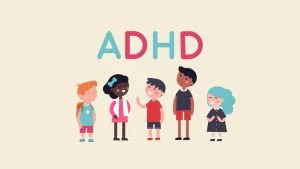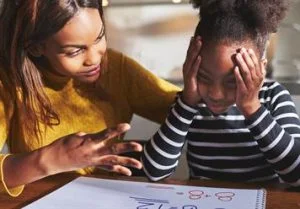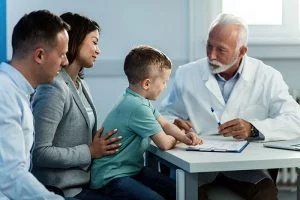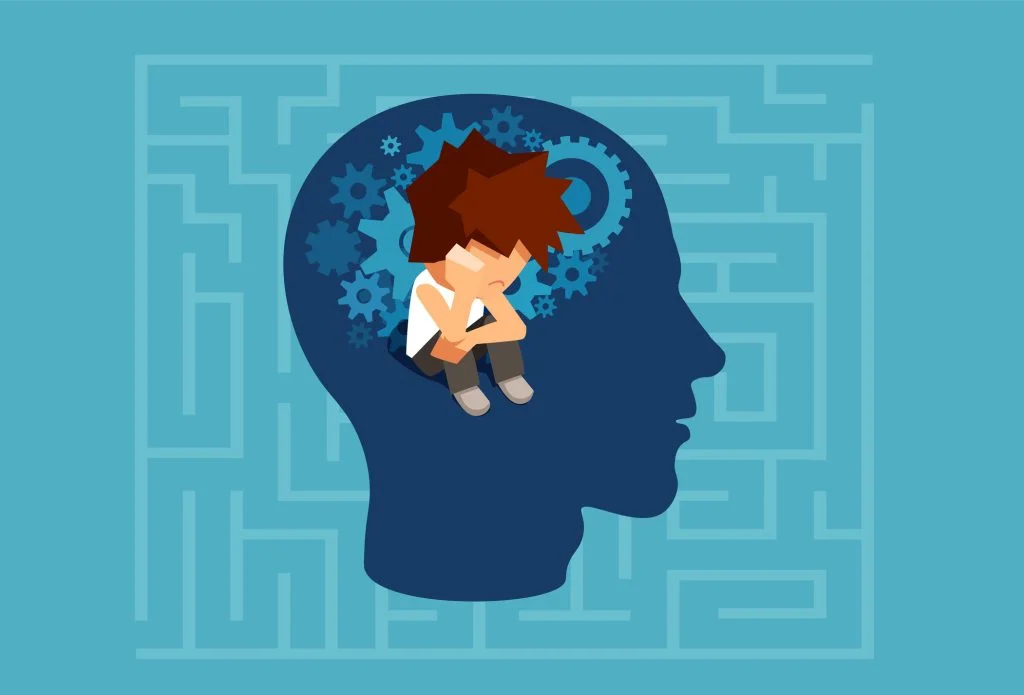The symptoms of ADHD in children can be difficult to spot, yet they are not impossible to treat. Many parents do not know that their child has ADHD until their symptoms get worse and they are older. This blog post will tell you about ADHD in children. What can you do when you know they have it? You should share it with the doctor.
Contents
What Is ADHD?

ADHD is a persistent pattern of inattention and/or hyperactivity-impulsivity that interferes with functioning or development. It usually begins before age 12 years, shows itself over time, and lasts at least six months. The specific symptoms must be present for more than half the days in a six-month period (as assessed by parents or teachers) and cannot be better explained by another disorder (e.g., anxiety, mood).
Symptoms of ADHD

The four main symptoms of ADHD are inattention, hyperactivity-impulsivity, disorganization, and problems with attention span. Let’s explore each one in more detail:
- Inattention is a tendency to become easily distracted, miss details, and become forgetful in daily activities.
- Hyperactivity-impulsivity is a tendency to be constantly on the go, act without thinking first, and have trouble waiting for a turn.
- Disorganization is a difficulty staying organized and managing time effectively.
- Attention span problems mean that it’s hard to stay focused on one task for longer than a few minutes.
The most common symptoms in children are hyperactivity-impulsivity, followed by inattention and more minor problems with attention span. There is not necessarily order to how the symptoms show up or any logic behind which ones may be present; any combination of these four main signs can happen together or separately.
Symptoms of ADHD In Children

Though ADHD is a common disorder, many people don’t know much about it. Here are ten things you might not know about the symptoms of ADHD in children:
- The four main symptoms of ADHD can show up in different ways in different kids. There’s no one “type” of a child with ADHD; every case is different. ADHD can look like a lot of things, but there are some common themes:
- Hyperactivity and impulsivity (pushing ahead without thinking) may be obvious in kids with this disorder. It can be hard for kids to sit still and focus on things. They might seem like they have a lot of energy.
- Inattention may be harder to spot, especially if the child is bright and able to compensate well in school. Look for kids who seem to daydream a lot or seem easily distracted. They might not be good at following instructions.
- Attention span problems are often mistaken for laziness or lack of intelligence; however, this is not the case. People with ADHD can get interested in things and concentrate on them. But they can lose attention quickly if the task is too difficult or takes a long time to complete (like homework).
- Disorganization is also hard for other people to see; kids who are disorganized might be thought of as “lazy.” However, it’s actually a real struggle for them to keep things in order. They might have trouble with time management, be forgetful, and be messy.
- ADHD is often comorbid with other disorders. This means that kids with ADHD are more likely to also have other disorders like anxiety, mood disorder, or learning disability.
- Girls can have ADHD. ADHD is often thought of as a disorder that affects boys more than girls. However, the symptoms in girls are different from those in boys and may be harder to recognize.
- ADHD can get better over time for most people; however, it will never go away completely. It might not look like ADHD anymore because kids grow out of some of the symptoms, but it’s still there.
- The best way to know if your child has ADHD is to talk to a doctor. There are many tests that can be done to help figure out what might be going on.
- If you think your child might have ADHD, the most important thing you can do is get them help. If a person has ADHD, the sooner they get treatment, the easier it will be for them to learn how to deal with it.
Effects Of ADHD In Children
Inattention, hyperactivity, and impulsiveness are the three most common symptoms of ADHD. However, there are other symptoms that might go undetected. According to the Attention Deficit Disorder Association (ADDA), children with ADHD can also experience problems with memory, mood swings, difficulty sleeping, and eating habits, as well as low self-esteem and problems with social interactions.
It is important to be aware of these other symptoms and seek help if you think your child might have ADHD. Untreated ADHD can lead to academic and behavioral problems in children. However, with treatment, most children with ADHD can achieve success in school and lead fulfilling lives.
If you are concerned that your child might have ADHD, it is important to first rule out any other possible causes of symptoms. For example, sleep problems could be caused by another medical condition or anxiety disorder. It’s very important that your child meets with a professional to be able to diagnose whether he has ADHD. There are many treatment options. They can help you decide which one is best for your child.
How To Deal With Symptoms of ADHD In Children?

There are a few simple ways to deal with symptoms of ADHD in children. These include:
- Figure out what works best for your child and try to stick with that routine as much as possible. Routine can make it easier for kids to keep themselves organized, focused, and on track; however, if you have too many routines or rules about things, it can be hard for kids to keep up.
- Educate yourself and your child about ADHD. The more you know, the better you’ll be able to understand what’s going on and how to help your child.
- Get help from professionals if needed. If you feel like you’re struggling or don’t know how to deal with ADHD, don’t be afraid to ask for help. There are many people who can give you advice or help you find resources.
Symptoms of ADHD in children can vary a lot, and it’s often hard to tell what might be going on. If you think your child might have ADHD, the best thing to do is talk to a doctor.
Benefits Of Dealing With The Symptoms of ADHD In Children
There are many benefits to dealing with the symptoms of ADHD in children. These include:
- Kids will be able to focus better in school and learn more effectively.
- They will have less trouble making friends and getting along with others.
- ADHD can often lead to anxiety or mood disorders, so treating ADHD can help with these problems too.
- Their self-esteem will likely improve when they’re able to be successful at things and meet goals.
Conclusion
To conclude, we hope you’ve learned a lot about ADHD and how it affects children. If your child is showing signs of the disorder or you suspect they may have ADHD, talk to their pediatrician for advice. They can help decide if an assessment by a mental health professional is needed. It is important to remember that there are many places to find help for ADHD. It can be hard without them. We wish you all the best!
A Word From Therapy Mantra
Your mental health — Your psychological, emotional, and social well-being — has an impact on every aspect of your life. Positive mental health essentially allows you to effectively deal with life’s everyday challenges.
At TherapyMantra, we have a team of therapists who provide affordable online therapy to assist you with issues such as depression, anxiety, stress, workplace Issues, addiction, relationship, OCD, LGBTQ, and PTSD. You can book a free therapy or download our free Android or iOS app.


